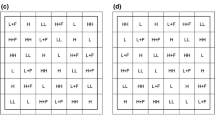Summary
We examined whether individual cattle egrets (Bubulcus ibis) base their decisions of where to forage, and how long to stay in a patch, on the behavior of other flock members. Cattle egrets commonly forage in flocks associated with cattle and capture prey at higher rates when they do not share a cow with another egret. Foraging egrets provide cues of the location of prey and their success in capturing prey. Therefore, there is the possibility of information transfer between egrets in a flock. We predicted that egrets should only move to occupied patches when the resident was capturing enough prey that it is profitable for the invader to share the patch or take over the patch. However, egrets did not seem to decide where to forage based on neighbors' rates of energy intake, but rather on the presence or absence of conspecifics in a patch. We also predicted that an egret should remain in a patch until its rate of energy intake dropped to or below the average rate for other egrets within the flock. However, egrets that were foraging more efficiently than the average rate for the flock switched patches sooner than less efficient foragers. Egrets did not appear to increase foraging success by gaining information on patch quality from neighbors.
Similar content being viewed by others
References
Blaker D (1969) Behaviour of the Cattle Egret Ardeola ibis. Ostrich 40:75–129
Charnov EL (1976) Optimal foraging, the marginal value theorem. Theor Pop Biol 9:129–136
Dinsmore JJ (1973) Foraging success of Cattle Egrets, Bubulcus ibis. Am Midl Nat 89:242–246
Gibb JA (1958) Predation by tits and squirrels on the eucosmid Ernarmonia conicolana (Heyl.). J Anim Ecol 27:375–396
Giraldeau L-A, Lefebvre L (1986) Exchangeable producer and scrounger roles in a captive flock of feral pigeons: a case for the skill pool effect. Anim Behav 34:797–803
Green RF (1984) Stopping rules for optimal foragers. Am Nat 123:30–40
Grubb TC (1976) Adaptiveness of foraging in the Cattle Egret. Wilson Bull 88:145–148
Hanebrink EL (1971) Food, feeding behaviour and extension of range of the Cattle Egret. Migrant 42:49–53
Heatwole H (1965) Some aspects of the association of Cattle Egrets with cattle. Anim Behav 13:79–83
Jenni DA (1969) A study of the ecology of four species of herons during the breeding season at Lake Alice, Alachua County, Florida Ecol Monogr 39:257–270
Krebs JR (1973) Behavioral aspects of predation. In: Bateson PPH, Klopfer PH (eds) Perspectives in ethology, vol. 1, Plenum, New York, pp 73–111
Krebs JR, McCleery RH (1984) Optimization in Behavioural Ecology. In: Krebs JR, Davies NB (eds) Behavioural ecology: an evolutionary approach. Blackwell Scientific Publications, London, pp 122–147
Krebs JR, MacRoberts M, Cullen J (1972) Flocking and feeding in the great tit Parus major: an experimental study. Ibis 114:507–530
Krebs JR, Ryan JC, Charnov EL (1974) Hunting by expectation or optimal foraging? A study of patch use by chickadees. Anim Behav 22:953–964
McNair JN (1982) Optimal giving-up times and the marginal value theorem. Am Nat 119:511–529
Meyerriecks AJ (1962) Diversity typifies heron feeding. Nat Hist 71:48–59
Pulliam HR, Caraco T (1984) Living in groups: is there an optimal group size? In: Krebs JR, Davies NB (eds) Behavioural ecology: an evolutionary approach. Blackwell Scientific Publications, London, pp 122–147
Scott D (1984) The feeding success of cattle egrets in flocks. Anim Behav 32:1089–1100
Siegfried WR (1971) Feeding activity of the Cattle Egret. Ardea 59:38–46
Stephens DW, Krebs JR (1986) Foraging theory. Princeton Univ. Press, Princeton, New Jersey, pp 170–205
Thompson CF, Lanyon SM, Thompson KM (1982) The influence of foraging benefits on association of Cattle Egrets (Bubulcus ibis) with cattle. Oecologia 52:167–170
Valone TJ (1989) Group foraging, public information, and patch estimation. Oikos 56:357–363
Waage JK (1979) Foraging for patchily distributed hosts by the parasitoid, Nemeritis canescens. J Anim Ecol 48:353–371
Ydenberg RC (1984) Great tits and giving-up times: decision rules for leaving patches. Behaviour 90:1–24
Author information
Authors and Affiliations
Rights and permissions
About this article
Cite this article
Metz, K.J., Prior, K.A. & Mallory, M.L. Do cattle egrets gain information from conspecifics when foraging?. Oecologia 86, 57–61 (1991). https://doi.org/10.1007/BF00317389
Received:
Accepted:
Issue Date:
DOI: https://doi.org/10.1007/BF00317389




